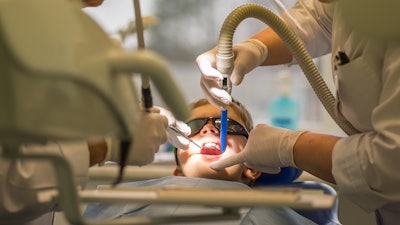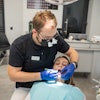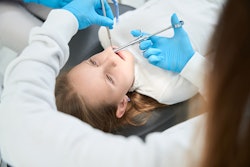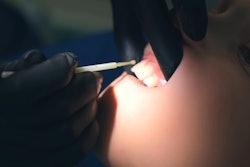
Applying a sugar-free flavoring before administering local anesthetic (LA) injections in pediatric dental patients may decrease pain, according to a study recently published in the International Journal of Paediatric Dentistry
The use of the flavoring lowered children's heart rates and behavior indicators, including total discomfort scores and motor responses, compared to those who were numbed without anything extra, the authors wrote.
"This study is the first to show that prior administration of a sugar-free flavor as a distraction technique can reduce pain during dental injections in children aged 4-9 years," wrote the authors, led by Dr. Ola B. Al-Batayneh of the department of preventive dentistry at the Jordan University of Science and Technology (Int J Paediatr Dent, April 2, 2024).
The study included 84 children ages 4 to 9 who needed injections on both sides of their mouths. One side received injections after a sugar-free flavor was applied, while the other side received sterile water.
The heart rates were measured as an objective indicator of pain using a fingertip pulse oximeter. Pulse rate was recorded before and during injections, with the higher reading noted. Additionally, the sound, eyes, and motor (SEM) scale, scoring from 0 to 9, was also employed to assess pain, with higher scores indicating more discomfort, they wrote.
In children ages 4 to 6 years old, during injections, the heart rate was significantly lower with flavor (p < 0.001), and the difference in heart rate before and during injection was smaller with flavor (p = 0.001). Also, SEM scores were significantly lower with flavor (p < 0.001).
Similar results were observed in those ages 7 to 9 years old, with lower heart rates and SEM scores in those who received a sweet flavor prior to injection. Regression analysis for the whole sample confirmed that flavor administration prior to injection had a significant effect on pain reduction (p = 0.001 and 0.000), according to the results.
However, the study had limitations. It solely focused on infiltration injections. Further research is needed on other types of injections, such as inferior alveolar block and palatal infiltration injections, they added.
"By simultaneously activating the taste and olfactory senses, the use of flavors that are sugar-free, simple to use, and affordable may encourage paediatric dentists to use this distraction approach during injections for children," Al-Batayneh et al concluded.




















